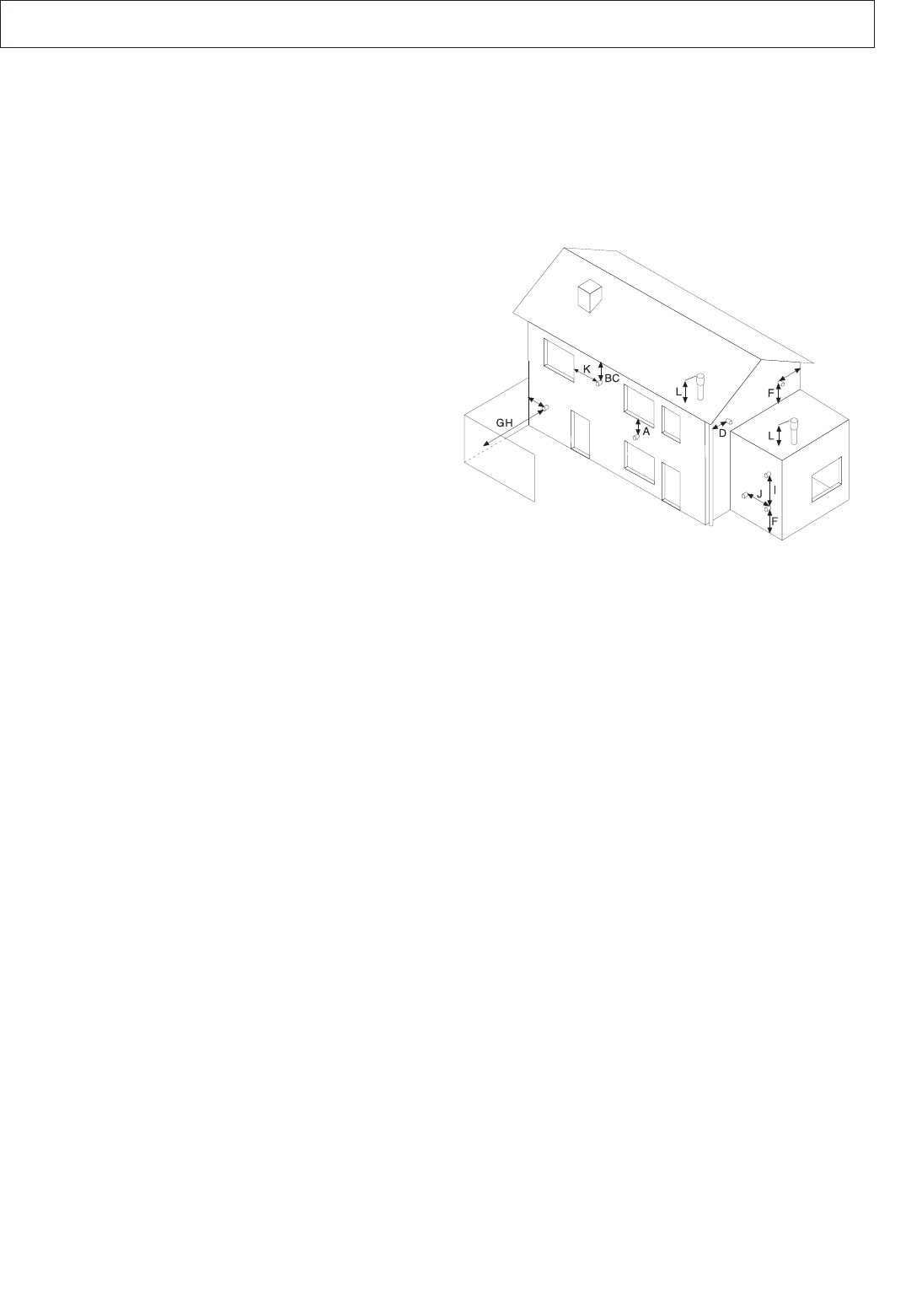
13
Reference Standards
In the United Kingdom, the installation and initial start up of
t
he boiler must be by a CORGI Registered installer in
accordance with the installation standards currently in effect,
as well as with any and all local health and safety standards
i.e. CORGI.
In the Republic of Ireland the installation and initial start up of
t
he appliance must be carried out by a Competent Person in
accordance with the current edition of I.S.813 “Domestic Gas
I
nstallations” and the current Building Regulations, reference
should also be made to the current ETCI rules for electrical
i
nstallation.
T
he installation of this appliance must be in accordance with
the relevant requirements of the Local Building Regulations,
the current I.E.E. Wiring Regulations, the by-laws of the local
water authority, in Scotland, in accordance with the Building
Standards (Scotland) Regulation and Health and Safety
document No. 635, “Electricity at Work Regulations 1989”
and in the Republic of Ireland with the current edition of I.S.
813 and the Local Building Regulations (IE).
For detailed information on the installation of Condensing
boilers, reference should be made to the
ODPM Guide to
the Condensing Boiler Assesment Procedure for
Dwellings
.
C.O.S.H.H.
Materials used in the manufacture of this appliance are non-
hazardous and no special precautions are required when
servicing.
Codes of Practice
Installation should also comply with the following British
Standards Codes of Practice:
BS 7593:1992 Treatment of water in domestic hot
water central heating systems
BS 5440-1:2000 Flues
BS 5440-2:2000
Air Supply
BS 5449:1990 Forced ciculation hot water systems
BS 6798:2000
Installation of gas fired hot water
boilers of rated input not exceeding
70kW
BS 6891:1998 Installation of low pressure gas pipe up
to 28mm
BS 7671:2001
IEE Wiring Regulations
BS 4814:1990 Specification for expansion vessels
BS 5482:1994 Installation of L.P.G.
and in the Republic of Ireland in accordance with the
following codes of practice
I.S. 813 Domestic Gas Installations
Avoid installing the boiler where the air inlet can be polluted
by chemical products such as chlorine (swimming pool area),
or ammonia (hair-dresser), or alkaline products (launderette)
Flue
Detailed information on flue assembly can be found in Section
12 “Connecting the flue”
.
The boiler must be installed so that the flue terminal is
exposed to the free passage of external air at all times and
must not be installed in a place likely to cause nuisance. It
must not be allowed to discharge into another room or space
such as an outhouse or closed lean-to.
C
ondensing boilers have a tendency to form a plume of water
vapour from the flue terminal due to the low temperature of the
flue gasses. The terminal should therefore be located with due
regard for the damage or discolouration that might occur to
b
uildings in the vicinity and consideration must also be given to
adjacent boundaries, openable windows should also be taken
i
nto consideration when siting the flue.
The minimum acceptable clearances are shown below:
A - Directly below an open window or other opening 300
B - Below gutters, solid pipes or drain pipes 75
C - Below eaves 200
D - From vertical drain pipes and soil pipes 75
E - From internal or external corners 300
F - Above ground on a public walkway or patio 2100
G - From a surface facing a terminal 2500
H - From a terminal facing a terminal 2500
I - Vertically from a terminal in the same wall 1500
J - Horizontally from a terminal in the same wall 300
K - Horizontally from an opening window 300
L - Fixed by vertical flue terminal
NOTE:
T
HE
FLUE MUST NOT BE INSTALLED IN A PLACE LIKELY TO
CAUSE A NUISANCE
.
It may be necessary to protect the terminal with a guard, if this is
the case it will be necessary to purchase a stainless steel terminal
guard. Reference should be made to the Building Regulations for
guidance.
Ventilation
The room in which the boiler is installed does not require specific
ventilation.
If it is installed in a cupboard or compartment
permanent ventilation is not required for cooling purposes.
Gas Supply
The gas installation and soundness testing must be in
accordance with the requirements of BS 6891. Ensure that
the pipe size is adequate for demand including other gas
appliances on the same supply.
Electrical Supply
The appliance requires an earthed 230V - 50 Hz supply and
must be in accordance with current I.E.E. regulations.
E
E
Fig. 11
10. Installation Requirements


















